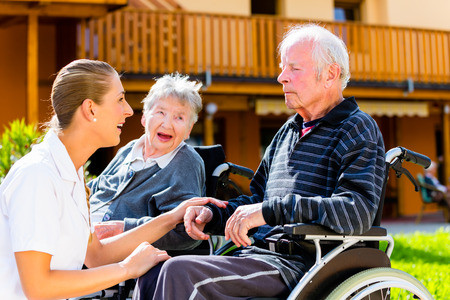Beyond Language Barriers: Effective Communication in Caregiving
iSavta | 01.04.2024

Communication lies at the heart of caregiving, serving as the foundation for building trust, understanding needs, and providing quality care. However, for migrant caregivers working in a foreign country, language barriers can present significant challenges in effectively communicating with clients and their families. In this article, we'll explore strategies and insights to transcend language barriers and foster effective communication in caregiving.
- Embrace Non-Verbal Communication
When words fail, non-verbal communication becomes paramount. Non-verbal cues such as facial expressions, gestures, and body language can convey empathy, reassurance, and understanding, even across language barriers. Pay attention to your body language and facial expressions, and use them to express warmth, empathy, and attentiveness. Likewise, observe the non-verbal cues of your clients and their families to better understand their emotions and needs.
- Utilize Visual Aids and Tools
Visual aids and tools can be invaluable in facilitating communication when verbal language is limited. Use picture cards, illustrations, or diagrams to explain concepts, routines, or instructions to clients who may have difficulty understanding verbal instructions. Utilize translation apps or devices to bridge language gaps and facilitate conversations with clients and their families. Be creative and resourceful in finding ways to communicate effectively using visual and technological tools.
- Simplify Language and Use Clear Communication
When communicating with clients who speak a different language, it's essential to simplify your language and use clear, straightforward communication. Avoid using complex vocabulary, slang, or idiomatic expressions that may be difficult for non-native speakers to understand. Speak slowly and clearly, and break down information into smaller, digestible chunks to enhance comprehension. Encourage clients to ask questions and provide feedback to ensure mutual understanding.
- Practice Active Listening
Active listening is a fundamental skill in effective communication, particularly in caregiving contexts. Take the time to listen attentively to your clients and their families, and validate their concerns, feelings, and preferences. Paraphrase and repeat key points to confirm understanding and show empathy and compassion. Demonstrate genuine interest and concern for their well-being, and foster an environment where clients feel heard, valued, and respected.
- Cultivate Cultural Sensitivity
Cultural sensitivity is essential in navigating communication across cultural and linguistic differences. Take the time to educate yourself about the cultural norms, values, and communication styles of your clients' backgrounds. Be mindful of cultural differences in attitudes towards authority, personal space, and expressions of emotions. Respect cultural preferences and adapt your communication approach accordingly to ensure culturally appropriate care.
- Seek Language and Cultural Training
Invest in language and cultural training to enhance your communication skills and cultural competence. Enroll in language classes, workshops, or online courses to improve your proficiency in the language spoken by your clients. Seek opportunities for cross-cultural training or cultural sensitivity training to deepen your understanding of cultural differences and develop strategies for effective communication. Continuous learning and self-improvement are essential in overcoming language barriers and providing quality care to clients from diverse backgrounds.
Conclusion
Effective communication is essential in caregiving, especially for migrant caregivers working in a foreign country where language barriers may exist. By embracing non-verbal communication, utilizing visual aids and tools, simplifying language, practicing active listening, cultivating cultural sensitivity, and seeking language and cultural training, migrant caregivers can transcend language barriers and foster meaningful connections with their clients and their families. Remember that effective communication is not just about words—it's about empathy, understanding, and connection. With patience, empathy, and a commitment to cultural competence, migrant caregivers can overcome language barriers and provide compassionate and effective care to those they serve.












